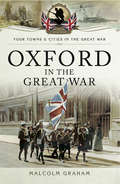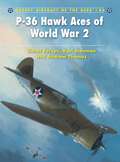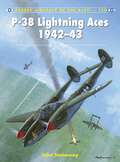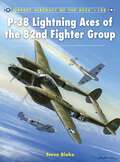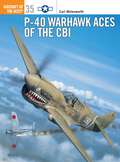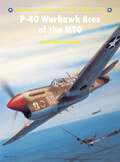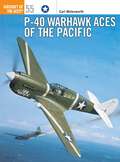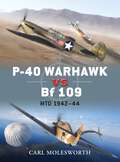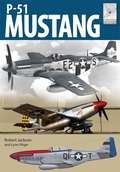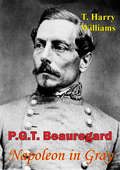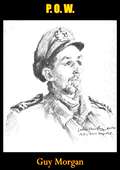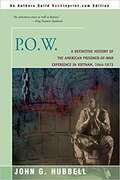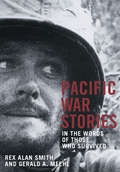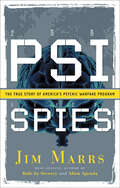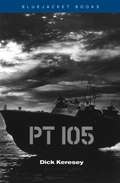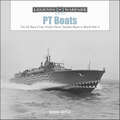- Table View
- List View
Oxford in the Great War (Your Towns & Cities in the Great War)
by Malcolm GrahamThis book tells the fascinating, and largely forgotten, story of Oxford's part in the Great War. The University City became a military training camp as soldiers and officer cadets occupied men's colleges left virtually empty as undergraduates enlisted. Public buildings were converted into military hospitals where many war casualties were treated. The City also took in Belgian and Serbian refugees.Oxford dons engaged in vital war work, and academic life largely depended upon the women's colleges. Local industries, including Morris's new car factory at Cowley, converted to war production, and women made munitions or replaced men in other work.Fear of invasion sparked the formation of a Dad's Army, and a black-out protected the City from air raids. Civilians, especially women, supported the war effort through fund-raising and voluntary work. They also cultivated war allotments as food shortages led to communal kitchens and rationing.This expert account shows a civilian population coping with anxiety during a titanic struggle in which college heads and the humblest citizens were afflicted equally by the loss of loved ones.
P-36 Hawk Aces of World War 2
by Chris Davey Lionel PersynThe Curtiss P-36 began its life in the US where it was considered a revolution in performance design in comparison to other US fighters. Its pilots achieved some of the first American victories of the war and many went on to become aces. One P-36 pilot, Frances Gabreski, became the leading US ace in the European Theater. Yet by the time of the Japanese attack on Pearl Harbor the P-40 was increasingly supplanting the P-36, which the US then exported to France under the guise of the Hawk 75. Flown by the French, captured by the Germans, sold to the Finns, transferred to India and Africa, and even incorporated into the RAF, the Hawk 75 saw service in every theater of operations and in a variety of combat environments. This book depicts the fascinating life of an aircraft that fought on both sides in the war, including the oft-overlooked Vichy French Air Force, with color artwork and photographs illustrating just how many national P-36 variants there were. First hand accounts recreate many of the conflicts that gave rise to over 60 pilots from several nations who became aces flying P-36 variants. This volume completes the Osprey Aircraft of the Aces coverage of the Curtiss Hawk family.
P-38 Lightning Aces 1942-43
by John StanawayThe first P-38s became operational with the 1st Fighter Group in April 1941, and the initial combat deployments were made in Alaska, the Southwest Pacific and North Africa during the latter part of 1942. Photographic reconnaissance versions of the P-38 were in action even sooner when F-4 (P-38E) models were rushed to frontline units a few months after Pearl Harbor. Often using modified field measures to equip aircraft and train pilots in this demanding fighter, early pilots wrote a remarkable record of accomplishments that displayed a high degree of courage and innovation. Every theatre in which the United States was involved saw deployment of the P-38, and more than 60 Lightning pilots were credited with at least five victories by the end of 1943. Some of the early aces to be featured are photo-reconnaissance ace Karl Polifka, who supposedly scored some of the first unofficial P-38 aerial victories in the period April through August 1942, and 39th Fighter Squadron aces Charles King, Dick Bong and Hoyt Eason, who scored some of the first victories for the squadron. Some of the aces of the Mediterranean were 37th FS pilots Leverette, Wilkins and Hanna, who flew older G-models during the period when the celebrated Stuka shootdown took place in October 1943. New information and insight on this operation, including the identity of some of the German participants, is now available. New photos and details are available regarding CBI aces Bob Schultz, Hampton Boggs, Harry Sealy and others too.
P-38 Lightning Aces of the 82nd Fighter Group
by Chris Davey Steve BlakeWhen the 82nd Fighter Group was organised in March 1942, most of its initial pilot cadre was comprised of newly graduated staff sergeant pilots of Class 42-C - enlisted men! They learned to fly the P-38 at Muroc, in California's Mojave Desert, and then moved to the Los Angeles area to continue their training and to serve as part of its air defence. In September 1942 the group was transported to the East Coast, from where it shipped out to Ireland on the Queen Mary. By this time all its remaining sergeant pilots had been commissioned. As of VE-Day the 82nd Fighter Group's score of confirmed aerial victories stood at 548 aircraft shot down, plus a huge amount of enemy materiel - including aircraft - destroyed on the ground and the sea. It had been awarded three Distinguished Unit Citations. The cost of this success was high, however, for around 250 of the group's pilots had either been killed in action or captured.
P-40 Warhawk Aces of the CBI
by Carl MolesworthThis book details the colourful experiences of the elite pilots of the AAF's Tenth and Fourteenth Air Forces in the 'forgotten' China-Burma-India theatre during WW2. Inheriting the legacy of the American Volunteer Group (AVG), units such as the 23rd FG 'held the line' against overwhelming Japanese forces until the arrival of the first P-38s and P-51s in 1944. The Warhawk became synonymous with the efforts of the AAF in the CBI, being used by some 40 aces to claim five or more kills between 1942-45. This volume is the first of four covering the exploits with the P-40 during World War 2.
P-40 Warhawk Aces of the MTO
by Jim Laurier Carl MolesworthThrown into action following the Torch landings of late 1942, the 'green' American pilots flying the obsolescent P-40F suffered cruelly at the hands of seasoned German fighter pilots flying superior machines. Those that survived learnt quickly, and a handful of Warhawk pilots succeeded in making ace by the time the Axis forces surrendered in North Africa. The action then shifted to Sicily and Italy, and the P-40 remained in service until mid-1944. This book charts the careers of the 23 men who succeeded in making ace during that time, despite the advent of much better P-47 and P-51 fighters.
P-40 Warhawk Aces of the Pacific
by Jim Laurier Carl MolesworthThe first USAAF fighters to engage the Japanese in World War 2, a handful of P-40s rose to defend Pearl Harbor from attack on the morning of 7 December 1941. Warhawk units were also heavily involved in the ill-fated fight to stem invading Japanese forces in the Philippines and Java between December 1941 and April 1942 and again in the Gilbert and Marshall Islands between January 1943 and March 1944. This book examines The Warhawk's wartime exploits and all of its aces including 'aces-in-a-day' Mel Wheadon and Joe Lesika.
P-40 Warhawk vs Bf 109
by Jim Laurier Carl MolesworthAlthough the P-40 and the Bf 109 both joined the air war over North Africa at nearly the same time in early 1941, the venerable German fighter was already fully sorted with a combat career dating back to 1937 in Spain, while the American fighter was making its combat debut in the hands of the RAF's Desert Air Force. Both aircraft were low-wing designs powered by a single liquid-cooled engine of roughly the same output, but there the similarities ended. The Bf 109 was small and agile, capable of operating at high altitudes. The P-40's weight and engine limited it to middle-altitude operations, but it was more manoeuvrable than the Bf 109 and extremely capable in the fighter-bomber role. In typical encounters, Bf 109 pilots would climb above a formation of P-40s and then dive into battle, seeking to maintain the initiative and a speed advantage. The P-40 pilots would respond by trying to turn into the attack. The tide turned in the autumn of 1942, by which time USAAF P-40 squadrons had joined the fight in time for the final Allied push from El Alamein and the Operation Torch landings in Morocco.From the Trade Paperback edition.
P-40 Warhawk vs Ki-43 Oscar
by Jim Laurier Carl Molesworth Mark PostlethwaiteKnown for the distinctive "sharkmouths" decoration on their noses, P-40 fighters first saw combat in China during World War II.Their most common adversary was the Japanese Nakajima Ki-43, nicknamed "Oscar." Carl Molesworth describes and explains the design and development of these two foes, the products of two vastly different philosophies of fighter design. The P-40 was heavily armed and sturdy with armor protection and self-sealing fuel tanks, but paid for this with the loss of speed and a sluggish performance at altitude. The Ki-43 was a rapier to the battleaxe P-40 and the Ki-43 was immensely nimble, though with less firepower and durability. This book examines these two different fighters, and the pilots who flew them over China, with an action-packed text, rare photographs and digital artwork.
P-47 Thunderbolt Units of the Twelfth Air Force
by Chris Davey Jonathan BernsteinThe P-47 Thunderbolt, originally designed as a high-altitude interceptor, became the principle US fighter-bomber of World War 2. First adapted to the ground attack role by units of the Twelfth Air Force in early 1944, the strength and durability of the P-47 airframe, along with its massive size, earned it the nickname 'Juggernaut', which was quickly shortened to 'Jug' throughout the MTO and ETO. Twelfth Air Force fighter groups had done a superb job flying both tactical strike missions and bomber escort in the P-40F since late 1942. The sturdy and capable Curtiss fighter served well as a fighter-bomber, but still remained susceptible to ground fire due to its liquid-cooled inline engine. Alongside the Twelfth's P-40 units, an additional two fighter groups flew the A-36 dive-bomber version of the P-51 Mustang and several others employed the twin-engined P-38 and mid-engined P-39. By October 1943, with the creation of the Fifteenth Air Force, nearly half of the Twelfth's fighter groups would be re-tasked with strategic escort missions, leaving six groups to perform close air support and interdiction missions throughout the entire Mediterranean theatre. The remaining P-40 and A-36 groups began refitting with the P-47 in the early spring of 1944 and were the first to use the 'Jug' in the ground support role, creating many of the tactics, techniques and procedures that would become standardised throughout the USAAF's tactical air forces. The group's inflicted incredible damage on the enemy's transport routes in particular, using rockets, bombs, napalm and machine gun rounds to down bridges, blow up tunnels and strafe trains. Myriad firsthand accounts and period photography reveal the spectacular success enjoyed by the Thunderbolt in the MTO in the final year of the war.
P-51 Mustang (Flight Craft)
by Robert Jackson Lynn RitgerAn illustrated history of the renowned fighter aircraft, ideal for modelers and aviation enthusiasts: “Highly recommended.” —AMPS IndianapolisThe North American P-51 Mustang was one of the most successful and effective fighter aircraft of all time. It was initially produced in response to a 1940 RAF requirement for a fast, heavily armed fighter able to operate effectively at altitudes in excess of 20,000 feet. North American built the prototype in 117 days, and the aircraft, designated NA-73X, flew on October 26, 1940. The first of 320 production Mustang Is for the RAF flew on May 1, 1941, powered by an 1,100hp Allison V-1710-39 engine. RAF test pilots soon found that with this powerplant the aircraft did not perform well at high altitude, but that its low-level performance was excellent.It was when the Mustang airframe was married to a Packard-built Rolls-Royce Merlin engine that the aircraft’s true excellence became apparent. Possessing a greater combat radius than any other Allied single-engine fighter, it became synonymous with the Allied victory in the air.During the last eighteen months of the war in Europe, escorting bomber formations, it hounded the Luftwaffe to destruction in the very heart of Germany. In the Pacific, operating from advance bases, it ranged over the Japanese Home Islands, joining carrier-borne fighters such as the Grumman Hellcat to bring the Allies massive air superiority.Yet the Mustang came about almost by accident, a product of the Royal Air Force’s urgent need for new combat aircraft in the dark days of 1940, when Britain, fighting for survival, turned to the United States for help in the island nation’s darkest hour. This is its story, including plentiful photos and information for modelers.
P-51 Mustang: Long Range Fighter (Images of War)
by Martin W. BowmanToday, the Mustang is a living legend and is remembered as probably the finest long-range single-seat piston-engined fighter ever built. Here, in words and images, the esteemed aviation historian Martin Bowman tells the story of an aircraft that continues to provoke enthusiastic praise. We look at the Mustang's involvement in the Second World War and the Korean War, as well as other conflicts and engagements. This new addition to the Images of War series serves as a tribute to an aircraft with a particularly impressive wartime record, the legacy of which is still felt today.
P-61 Black Widow Units of World War 2
by Mark Styling Warren ThompsonThe first aircraft to be purposely designed as a radar-equipped nightfigher, Northrop's P-61 Black Widow was heavily influenced by early RAF combat experience with radar-equipped aircraft in the years 1940/41 of World War II (1939-1945). Built essentially around the bulky Radiation Laboratory SCR-720 radar, which was mounted in the aircraft's nose, the P-61 proved to be the largest fighter ever produced for frontline service by the USAAF. Twin-engined and twin-boomed, the Black Widow was armed with a dorsal barbette of four 0.50-in Browning machine guns and two ventrally-mounted 20 mm cannon. This volume features all the frontline users of the mighty P-61, and includes many first-hand accounts from pilots and gunners who saw action in the Pacific, Mediterranean and Western Europe.
P. G. T. Beauregard: Napoleon In Gray (Southern Biography Ser.)
by T. Harry Williams"First published in 1955 to wide acclaim, T. Harry Williams' P. G. T. Beauregard is universally regarded as "the first authoritative portrait of the Confederacy's always dramatic, often perplexing" general (Chicago Tribune). Chivalric, arrogant, and of exotic Creole Louisiana origin, Beauregard participated in every phase of the Civil War from its beginning to its end. He rigidly adhered to principles of war derived from his studies of Jomini and Napoleon, and yet many of his battle plans were rejected by his superiors, who regarded him as excitable, unreliable, and contentious. After the war, Beauregard was almost the only prominent Confederate general who adapted successfully to the New South, running railroads and later supervising the notorious Louisiana Lottery. This paradox of a man who fought gallantly to defend the Old South and then helped industrialize it is the fascinating subject of Williams' superb biography."-Print ed.
P. O. W.
by Guy MorganThe fascinating account of a British Naval Officer who was captured during the Second World War and endured the prisoner of war camps of both the Fascist Italians and the Nazi Germans.“I was captured by the Germans in a partisan fishing boat off the Dalmatian Island of Lussin on November 13, 1943. As a result of a wound then sustained I was repatriated via Sweden on September 9, 1944….My aim throughout has been to present an accurate picture of things as they were. My motives were personal—so that I should not bore my wife with endless anecdote, so that I should be forearmed with an adequate answer to the inevitable question, “What was it like?” I knew that as soon as I returned and groped for the broken ends of the thread of my life, I should forget this strange catalepsis and, in a week or two, should find it difficult to believe these things really happened.And, if further excuse for writing were needed, it would be that I was fortunate enough to have as friend and companion in most of these experiences Lieutenant John Worsley, R.N.V.R., Official Naval War Artist, who illustrated the book.”
P.O.W.: A Definitive History of the American Prisoner-of-War Experience in Vietnam, 1964-1973
by John G. Hubbell"With the first page the book explodes ... a story of fortitude and patriotism to inspire generations of Americans to come." Philadelphia Evening Bulletin "It's to our experience as Blackstone is to the law." Col. George E. "Bud" Day, USAF (Ret.), attorney, former POW and Medal of Honor.
PACIFIC WAR STORIES: In The Words Of Those Who Survived
by Rex Alan Smith Gerald A. MeehlThe most extensive collection published to date of first-person oral histories on so many diverse aspects of the war in the Pacific-told in gripping, eyewitness accounts by more than seventy veterans from all branches of service.In this new book by the authors of Pacific Legacy: Image and Memory of World War II in the Pacific, the history of the War in the Pacific comes vividly to life in the words of those who witnessed it first hand. The editors create for the reader, as the veterans themselves recall it, what that war was like-how it looked, felt, smelled, and sounded. The stories collected here are a unique portrayal of the mundane, exotic, boring, terrifying, life-altering events that made up their wartime experiences in World War II in the Pacific, a war fought on countless far-flung islands over an area that constitutes about one-third of the globe. What the veterans saw and lived through has stayed with them their entire lives, and much of it comes to the surface again through their vivid memories.The narratives, grouped into fifteen thematic, chronologically arranged chapters, are stirring, first-hand accounts, from front-line combat at the epicenter of violence and death to restless, weary boredom on rear area islands thousands of miles from the fighting. While their experiences differed, all were changed by what happened to them in the Pacific. These are not the stories of sweeping strategies or bold moves by generals and admirals. Instead, we hear from men and women on the lower rungs, including ordinary seamen on vessels that encountered Japanese warships and planes and sometimes came out second best, rank-and-file Marines who were in amtracs churning toward bullet-swept tropical beaches and saw their buddies killed beside them, and astounded eyewitnesses to the war's sudden start on December 7, 1941. This is an important book for military buffs as well as for the survivors of World War II and their families.
PAPUAN CAMPAIGN - The Buna-Sanananda Operation - 16 November 1942 - 23 January 1943 [Illustrated Edition]
by AnonWith 7 maps, 5 charts & 23 illustrationsDuring the early months of 1942 the Japanese were on the offensive everywhere in the Southwest Pacific...On 10 Dec. 1941, Japanese forces landed in the Philippines; on 15 Feb. 1942, Singapore fell...Then the attack shifted farther to the southeast, and from Rabaul...the Japanese High Command planned a two-pronged drive. One prong was to strike for control of southeastern New Guinea; the other was to thrust through the Solomon Islands.Neither attack reached its objective. When a Japanese convoy pushed around the eastern tip of New Guinea, it met American naval forces. In the ensuing Battle of the Coral Sea (4-8 May 1942), the Japanese suffered a decisive defeat...Failure in their attempt by sea did not end the Japanese effort to capture Port Moresby, which would afford them an invasion base only 340 miles from Australia. In July they landed at Buna, Gona, and Sanananda on the northeast coast of Papua and pushed southward across the Papuan Peninsula. The Australians first stopped the enemy and then, joined by American forces, drove him back to his landing bases. This long and hard counteroffensive not only freed Australia from the imminent threat of invasion, but gave the United Nations their first toehold in the area of enemy defenses protecting Rabaul, center of Japanese power in the Southwest Pacific.The American part in the Buna-Sanananda campaign, in which Australian and American troops defeated "the invincible Imperial Army" of Japan, is the subject of this pamphlet...The story is set in a background of fever-ridden swamp and jungle, where American soldiers lay day after day in waterlogged fox holes or crawled through murderous fire toward enemy positions they could not see. Despite all the difficulties imposed by terrain, climate, and the formidable strength of Japanese fortifications, despite failure in many heroic attacks, the effort was carried through to a final and smashing success.
PLA Influence on China's National Security Policymaking
by Andrew Scobell Phillip C. SaundersIn recent years there have been reports of actions purportedly taken by People's Liberation Army (PLA) units without civilian authorization, and of Chinese Communist Party (CCP) civilian leaders seeking to curry favor with the military--suggesting that a nationalistic and increasingly influential PLA is driving more assertive Chinese policies on a range of military and sovereignty issues. To many experienced PLA watchers however, the PLA remains a "party-army" that is responsive to orders from the CCP. The PLA's Role in National Security Policy-Making seeks to assess the "real" relationship between the PLA and its civilian masters by moving beyond media and pundit speculation to mount an in-depth examination and explanation of the PLA's role in national security policy-making. After examining the structural factors that shape PLA interactions with the Party-State, the book uses case studies to explore the PLA's role in foreign policy crises. It then assesses the PLA's role in China's territorial disputes and in military interactions with civilian government and business, exploring the military's role in China's civil-military integration development strategy. The evidence reveals that today's PLA does appear to have more influence on purely military issues than in the past--but much less influence on political issues--and to be more actively engaged in policy debates on mixed civil-military issues where military equities are at stake.
POW on the Sumatra Railway
by Christine BridgesJohn Geoffrey Lee (always known as Geoff) joined the RAF on his 20th birthday in June 1941. He left Liverpool on a troop ship in December 1941, with no idea where he was going. He eventually arrived in Java, where he was captured by the Japanese, along with many others. During his time in captivity, he survived several camps in Java, Ambon and Singapore and three hell ship journeys. After being washed ashore in Sumatra, (as a ferry he was being transported on blew up), he was then recaptured and suffered sheer hell as a slave on the Sumatra Railway. Enduring bouts of malaria, beri beri, tropical ulcers and a starvation diet was bad enough, but this was exacerbated by the searing heat and extreme cruelty meted out to the prisoners by the Japanese and Korean guards. Geoff miraculously survived, weighing just 6 stone when he arrived back in Liverpool in December 1945. After his release he found he had difficulty in convincing people where he had been as no one had heard of the “Sumatra Railway”, only the other one, thousands of miles away in Burma. Letters to newspapers were returned as ‘Just another Burma Railway story’. The Ministry of Defence, Commonwealth War Graves Commission, and The Imperial War Museum had no records of POW’s building a railway in Sumatra. So began Geoff’s journey, his aim… to prove to the establishment what he already knew to be true. This is Geoff's story of his captivity, release, and subsequent efforts in achieving his aim.
PS I Love You
by Lilian HarrySet in a Lyons Corner House in London, this is the third compelling novel in the series set against the backdrop of the Second World War.The war is progressing for the Nippies, the girls who work at the Lyons Corner House in Marble Arch. With the air raids, rationing and blackouts, life no longer has the carefree attitude it used to have. But new pain and pleasure await as everyone decides what effort they can make towards victory. Jo yearns for Nick, but the burns he sustained when he was shot down are life-changing and need the new procedure of plastic surgery. Will their marriage ever go ahead? And does Jo want it to? She loses herself in her new role as lumberjill, one of the women hewing timber for the war effort. Meanwhile, Phyl has been selected, along with some other trusted Nippies, for secret work. Far from family and friends, she works with munitions and tries to forget her desire to be a Wren. Her husband is far away but she never loses faith that one day they will be reunited...
PSI Spies: The True Story of America's Psychic Warfare Program
by Jim Marrs“In PSI Spies, Jim Marrs has provided the original report on the U.S. Army’s use of psychic remote viewing as an intelligence tool.” —Whitley StrieberLearn the Truth About Our Military’s Psychic SoldiersPSI Spies takes you behind the scenes of the US Army’s formerly top-secret remote viewing unit to see how the military has used this psychic ability as a tool and a weapon. Even though remote viewing was developed by various tax-supported government agencies, including the CIA, most Americans have never heard of this faculty.In the 1970s, with the support of Congress, the Army formed a small unit of remote viewers to spy for America. These soldiers/psychic spies gained penetrating knowledge about a wide variety of subjects. They were consulted to stop a Soviet plot to kill President Ronald Reagan. They mentally prowled the halls of the Kremlin. They probed Iraq’s hidden weapons sites in preparation for the 1991 Gulf War.From insights into our future to the continuing mysteries of UFOs and crop circles, no subject has been immune to the military remote viewers—America’s Psi Spies. And now, in this book, you can also find tips on how to remote view on your own.Praise for PSI Spies“PSI Spies is one of the best books ever written about the U.S. government’s top-secret psychic warfare unit. Marrs introduces us to all involved in this covert project and gives a detailed view of the benefits and limitations of applied remote viewing. I highly recommend it.” —Simeon Hein, PhD, author of Opening Minds“Marrs uses his impressive investigative skills and impeccable research to delve into the shadowy world of remote viewing and psychic spying as a form of intelligence gathering. Marrs presents compelling and thorough documentation of the classified quest of the U.S. government to understand the mysterious world of “psi” and turn it to their military advantage. Both provocative and highly entertaining, PSI Spies proves that our government takes paranormal phenomena far more seriously than we’ve ever been led to believe. Another must-read book by an author who is never afraid to dig deep for, and expose, the truth.” —Marie D. Jones, author of PSIence: How New Discoveries in Quantum Physics and New Science May Explain the Existence of Paranormal Phenomena
PT 105
by Richard Dick KereseyDrawing on his own experiences as the captain of PT 105 at Guadalcanal, Bougainville, and more, the author tells how the fastest little boat in combat contributed to the war effort.
PT 109: An American Epic of War, Survival, and the Destiny of John F. Kennedy
by William DoyleNew York Times bestselling author William Doyle’s PT 109 is the World War II story of shipwreck and survival that paved John F. Kennedy’s path to power.In the early morning of August 2, 1943, during a nighttime skirmish amid the Solomon Islands, the Japanese destroyer Amagiri barreled through thick fog and struck the U.S. Navy’s motor torpedo boat PT 109, splitting the craft nearly in half and killing two American sailors instantly. The sea erupted in flames as the 109’s skipper, John F. Kennedy, and the ten surviving crewmen desperately clung to the sinking wreckage; 1,200 feet of ink-black, shark-infested water loomed beneath. Informed that all hands were lost, the American base attempted no rescue. What follows is one of the most remarkable tales of World War II, one whose astonishing afterlife would culminate two decades later in the White House.Drawing on original interviews with the last living links to the events, previously untapped Japanese wartime archives, and a wealth of archival documents from the Kennedy Library, including a lost first-hand account by JFK himself, William Doyle has crafted a thrilling and definitive account of the sinking of PT 109 and its shipwrecked crew’s heroics. Equally fascinating is the story’s second act, in which Doyle explores how this extraordinary episode shaped Kennedy’s character and fate, proving instrumental to achieving his presidential ambitions.Featuring castaways on a deserted island, a spy network of Solomon Island natives, an Australian coast watcher hidden on the side of a volcano, an S.O.S. note carved into a coconut, and a daring rescue attempt, PT 109 is an unforgettable American epic of war and destiny.
PT Boats: The US Navy’s Fast Attack Patrol Torpedo Boats in World War II (Legends of Warfare: Naval #6)
by David DoyleHistory of the design, development, and deployment of the US Navy's famed fleet of PT boatsChronicles the construction, launch, commissioning, and combat use of PT boats, including John F. Kennedy's ill-fated PT-109Profusely illustrated with scarce archival photographs from diverse collections, including previously unpublished images
